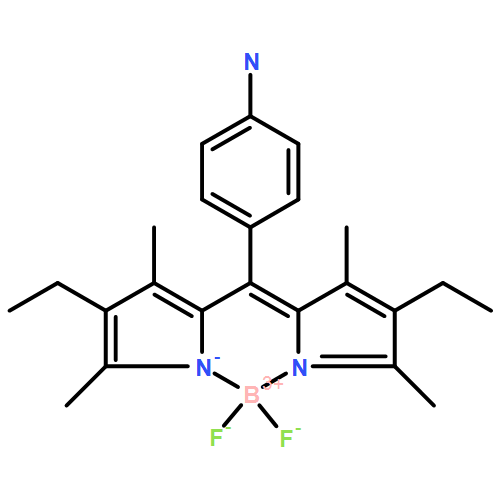We report the synthesis and structural characterization of modified Cram-type, resorcin[4]arene-based cavitands. Two main loci on the cavitand backbone were selected for structural modification: the upper part (wall domain) and the lower part (legs). Synthesis of unsymmetrically bridged cavitands with different wall components (i.e., 7, 8, and 14–18) was performed by stepwise bridging of the four couples of neighboring, H-bonded OH-groups of octol 1a (Schemes 1, 2, 4, and 5). Cavitands with modified legs (i.e., 20, 24, 27, and 28), targeted for surface immobilization, were synthesized by short routes starting from suitable aldehyde starting materials incorporating either the fully preformed leg moieties or functional precursors to the final legs (Schemes 7–10). The new cavitand substitution patterns described in this paper should enable the construction of a wide variety of functional architectures in the future. X-Ray crystallography afforded the characterization of cavitands 2c (Fig. 3) and 24 (Fig. 7) in the vase conformation, with 2c featuring a well-ordered CH2Cl2 guest molecule in its cavity. A particular highlight is the X-ray crystal-structure determination of octanitro derivative 19 (Scheme 6), which, for the first time, shows a cavitand, lacking substituents in the ortho-position to the two O-atoms of the four resorcinol moieties, in the kite-conformation (Fig. 5).
We report the synthesis of modified Cram-type cavitands bearing one or two fluorescent labels for single-molecule spectroscopic studies of vase![[BOND]](http://onlinelibrarystatic.wiley.com/undisplayable_characters/00f8ff.gif) kite conformational switching (Scheme 3). Syntheses were performed by stepwise bridging of the four couples of neighboring H-bonded OH groups of resorcin[4]arene bowls (Schemes 2 and 3). The new substitution patterns enable the construction of a large variety of future functional architectures. 1H-NMR Investigations showed that the new partially and differentially bridged cavitands feature temperature- and pH-triggered vase
kite conformational switching (Scheme 3). Syntheses were performed by stepwise bridging of the four couples of neighboring H-bonded OH groups of resorcin[4]arene bowls (Schemes 2 and 3). The new substitution patterns enable the construction of a large variety of future functional architectures. 1H-NMR Investigations showed that the new partially and differentially bridged cavitands feature temperature- and pH-triggered vase![[BOND]](http://onlinelibrarystatic.wiley.com/undisplayable_characters/00f8ff.gif) kite conformational isomerism similar to symmetrical cavitands with four identical quinoxaline bridges (Table). It was discovered that vase
kite conformational isomerism similar to symmetrical cavitands with four identical quinoxaline bridges (Table). It was discovered that vase![[BOND]](http://onlinelibrarystatic.wiley.com/undisplayable_characters/00f8ff.gif) kite switching of cavitands is strongly solvent-dependent.
kite switching of cavitands is strongly solvent-dependent.
Two boron complexes of 5-phenyldipyrromethenes bearing isothiocyanate groups on the phenyl ring have been synthesized for the first time. The utility of these new fluorescence probes for labeling biologically relevant proteins is demonstrated on two monoclonal antibodies that bind to antigens overexpressed on cancer cells. Spectral comparison of the two structures reveals significant photophysical differences, including bathochromically shifted excitation and emission bands, increased molar absorptivity and a large increase in fluorescence quantum yield of approximately 10 times. Differences in photophysical parameters are linked to hindered rotation of the phenyl ring in one of the probes.
The present work describes the synthesis of difluoro-boradiazaindacenes (Bodipy) functionalized at the central 8-position by phenylamino moieties easily transformable into phenyl amide scaffoldings. Molecules carrying three linear or branched chains were prepared and characterized. An X-ray crystal structure for the pivotal trimethoxyphenyl-Bodipy derivative was determined, and the packing is discussed in terms of molecular interactions; a key feature for the formation of thin films. All of the dyes are thermally stable up to 170 °C but no liquid-crystalline phases are observed. Reversible reduction and oxidation processes occur around +0.97 and −1.34 V, respectively, versus saturated calomel electrode in solution and the electroactivity and photoluminescence are maintained in thin films produced by vacuum evaporation. Interestingly, two distinct emissions are observed at 550 and 635 nm by electroluminescence of the trimethoxyphenyl-Bodipy derivative, corresponding to the luminescence of isolated molecules and dimers, respectively. Doping Alq3 films with this Bodipy molecule by vacuum evaporation produces organic light-emitting diodes (OLEDs) in which very efficient energy transfer from the Alq3 matrix to the Bodipy occurs by a resonance mechanism involving the first Bodipy excited state. Yellow light (550 nm, 344 cd m−2 at 15 V) is emitted at low doping concentration (7 mol %), whereas red light (635 nm, 125 cd m−2 at 15 V) is emitted at higher concentration (19 mol %). Dispersion of the Bodipy into a fluorescent poly(N-vinylcarbazole) polymer (PVK) (≈3 mol % per repeating unit of PVK) by solution processing exclusively produces yellow emission owing to the isolated Bodipyfluorophore (550 nm, 213 cd m−2 at 15 V). The second excited state of the Bodipy dye is likely involved during energy transfer from the PVK matrix.


